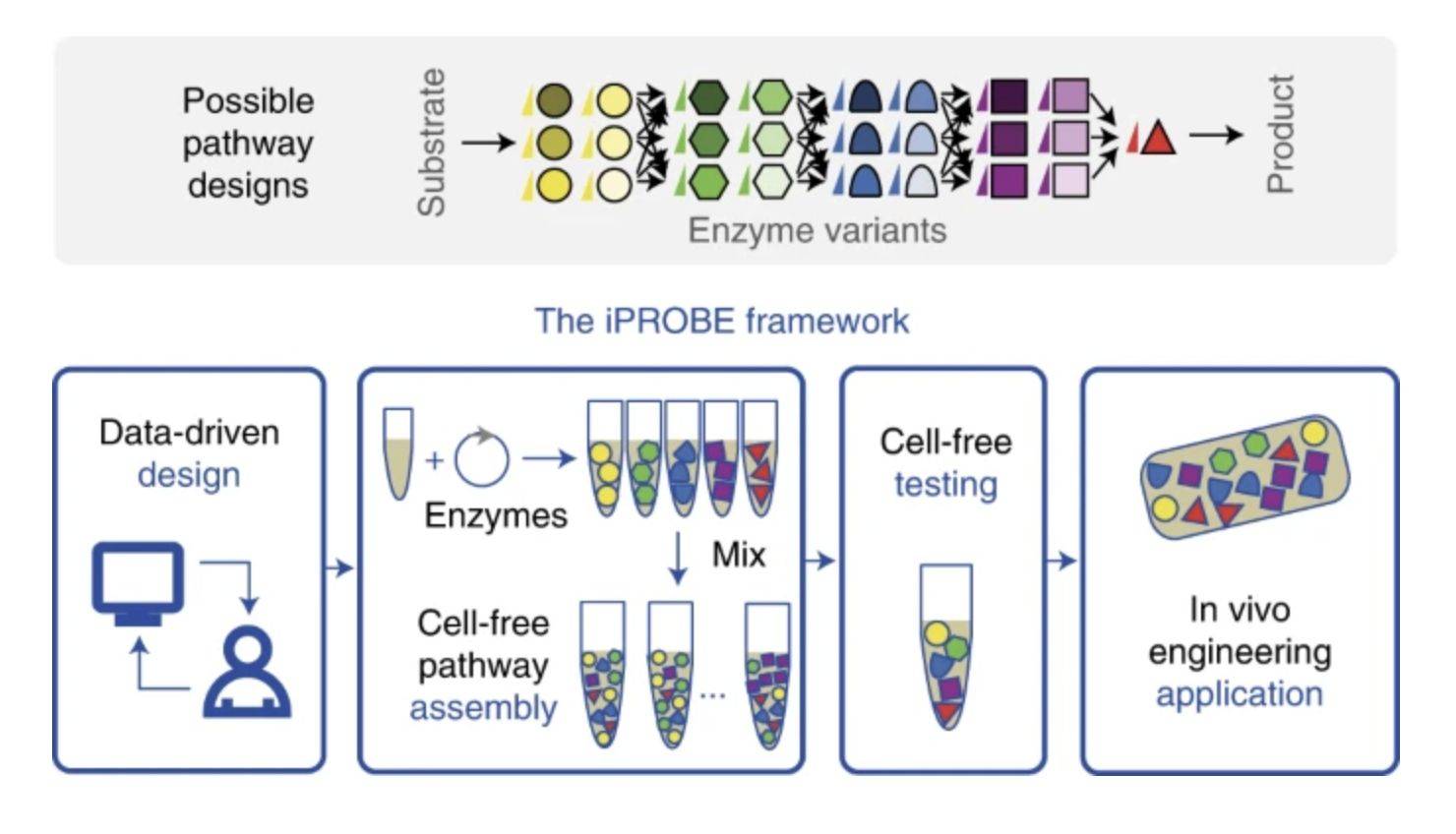Enzyme Engineering Design and Optimization involves the modification of enzymes to optimize their performance in various industrial applications. This is necessary for enzyme gene and plasmid synthesis as it can enhance the efficiency of these processes. By optimizing enzymes, we can increase efficiency, reduce costs, and promote environmentally friendly initiatives. The customization of this process allows us to design and optimize enzymes for specific applications, operating conditions, and performance requirements, making it a crucial aspect of enzyme gene and plasmid synthesis.
 Enzyme Engineering Design and Optimization (Tobias Heck, et al., 2012)
Enzyme Engineering Design and Optimization (Tobias Heck, et al., 2012)
Service Process
Our service process is designed with a customer-centric approach and involves several detailed steps:
- Initial Consultation: The process begins with an initial consultation where we take time to understand your specific requirements and objectives. This helps us to comprehend the unique needs of your project and design a customized approach.
- Enzyme Design and Engineering: Post consultation, our team of experts will design and engineer the enzymes in line with your needs. This involves a systematic approach to enzyme modification that ensures the enzymes are tailored to meet the specific demands of your project.
- Rigorous Testing: After engineering the enzymes, we conduct rigorous testing to verify their effectiveness. This testing process is comprehensive and ensures that the engineered enzymes perform as expected.
- Enzyme Optimization: Based on the results of the testing phase, we further optimize the enzymes. This optimization process is designed to enhance the performance of the enzymes and make them more efficient for your specific industrial applications.
- Performance Verification: After optimization, we again test the enzymes to ensure their performance meets the desired benchmarks. This step ensures that the optimized enzymes are ready for industrial application.
- Implementation Support: Once the enzymes have been optimized and verified, we assist with their implementation in your industrial processes. We provide support to ensure that the transition is smooth and the enzymes are integrated effectively.
- Ongoing Monitoring: After the enzymes have been implemented, we provide ongoing support and monitoring. This is to ensure that the optimized enzymes are performing optimally in your industrial processes. Regular monitoring allows us to quickly identify and address any potential issues, ensuring continuous and efficient performance.
We're here to assist you. If you have any questions, need more information, or would like to discuss a potential project, please don't hesitate to contact us. Our team is always eager to help and share our expertise.
Applications
| Application |
Description |
| Enzyme Gene Synthesis |
Enzyme gene synthesis involves the design and assembly of nucleotide sequences encoding specific enzymes. Enzyme engineering techniques are utilized to optimize these sequences for improved enzyme properties, including enhanced catalytic activity, stability under varying conditions, altered substrate specificity, and increased expression levels. Rational design approaches, computational algorithms, and directed evolution methods are employed to tailor the genetic code, codon usage, and structural features of synthetic genes, thereby enabling the production of enzymes with desired characteristics. Enzyme gene synthesis is essential for the development of custom-designed enzymes for industrial biocatalysis, biomedical applications, and fundamental research in enzymology and molecular biology. |
| Plasmid Engineering |
Plasmid engineering encompasses the manipulation and modification of plasmid DNA molecules for various genetic engineering applications. Enzyme engineering plays a crucial role in plasmid engineering by facilitating the construction, modification, and optimization of plasmid vectors. Enzymes such as restriction endonucleases, DNA ligases, polymerases, and recombinases are employed to manipulate plasmid backbones, insert or delete genetic elements, and introduce specific mutations or functional modules. These engineered plasmids serve as versatile tools for gene expression, protein production, gene editing, and synthetic biology applications. Plasmid engineering techniques enable the development of tailored genetic constructs and expression systems for diverse research, biotechnological, and therapeutic purposes. |
| Protein Engineering |
Protein engineering involves the modification and optimization of enzyme proteins to improve their properties and functionality. Enzyme engineering techniques are applied to engineer enzymes for enhanced catalytic activity, substrate specificity, thermal stability, pH tolerance, and resistance to inhibitors or denaturants. Rational design, directed evolution, and computational modeling are employed to design and select protein variants with desired traits for applications in biocatalysis, biomedicine, and industrial processes. |
| Drug Discovery |
Enzyme engineering contributes to drug discovery by providing tailored enzymes for high-throughput screening, lead optimization, and drug target validation. Engineered enzymes serve as tools for drug target identification, protein-protein interaction studies, and fragment-based drug design. Enzyme engineering techniques enable the development of enzyme inhibitors, activators, or modulators with enhanced potency, selectivity, and pharmacokinetic properties for the treatment of various diseases, including cancer, infectious diseases, and metabolic disorders. |
| Metabolic Engineering |
Metabolic engineering aims to optimize cellular metabolic pathways to produce desired compounds, such as biofuels, pharmaceuticals, and biochemicals. Enzyme engineering plays a central role in metabolic engineering by modifying enzyme activities, flux distributions, and regulatory mechanisms to enhance pathway efficiency and product yields. Through the rational design or directed evolution of enzymes, metabolic engineers can engineer cellular metabolism for improved productivity, substrate utilization, and product selectivity in microbial, plant, and mammalian cell systems. |
FAQs
Here are some frequently asked questions about Enzyme Engineering Design and Optimization, covering its purpose, process, benefits, industries it can benefit, safety, customization, and performance monitoring. If you have more specific or detailed questions, don't hesitate to get in touch with us directly.
Q: What is the purpose of Enzyme Engineering Design and Optimization?
A: The primary objective of Enzyme Engineering Design and Optimization is to enhance the performance of enzymes in industrial applications. By optimizing enzymes, we can increase efficiency in various processes, reduce costs, and promote environmentally friendly initiatives. This can lead to significant improvements in biofuel production, pharmaceuticals, and the food and beverage industry.
Q: How does the process work?
A: The process of Enzyme Engineering Design and Optimization involves the use of advanced methodologies like directed evolution and rational design. These techniques are used to modify the structural and functional properties of enzymes to optimize their performance. This involves a meticulous process of testing and refining to ensure the enzymes are perfectly suited for their intended applications.
Q: What industries can benefit from this technology?
A: This technology has a wide range of applications and can benefit various sectors. Industries involved in biofuel production, pharmaceuticals, and the food and beverage industry can significantly benefit from Enzyme Engineering Design and Optimization. Additionally, industries like agriculture, chemical production, waste management, and textiles can also leverage these optimized enzymes to improve their processes.
Q: What are the benefits of enzyme optimization?
A: Enzyme optimization can lead to greater efficiency in industrial processes, resulting in cost savings in the long run. Optimized enzymes can also reduce the need for harsh chemical processes, making industrial operations more sustainable and environmentally friendly. Moreover, optimized enzymes can deliver high performance under a wide range of conditions, increasing the versatility and applicability of industrial processes.
Q: Can all enzymes be engineered and optimized?
A: While most enzymes can be engineered and optimized, the success of the optimization process largely depends on the specific enzyme and its intended application. Some enzymes may be more amenable to engineering and optimization than others. Our experts take into account the unique properties and characteristics of each enzyme to ensure successful optimization.
Q: How long does the optimization process take?
A: The duration of the optimization process can vary significantly based on the complexity of the enzyme and the degree of optimization required. It involves a series of iterative steps including design, testing, and refinement, which can take anywhere from a few weeks to several months.
Q: Is Enzyme Engineering Design and Optimization expensive?
A: The cost of Enzyme Engineering Design and Optimization can vary depending on the scope of the project. However, it's important to note that the potential long-term benefits often outweigh the initial investment. Enhanced process efficiency, cost savings, and improved environmental sustainability can deliver significant return on investment over time.
Q: Is the process environmentally friendly?
A: Absolutely! One of the core goals of enzyme engineering is to enhance the sustainability of industrial processes. By optimizing enzymes, we can reduce the need for harsh chemicals, lower energy consumption, and minimize waste production, thereby reducing the environmental footprint of industrial operations.
Q: Are the engineered enzymes safe?
A: Safety is a top concern in the process of enzyme engineering. All engineered enzymes undergo rigorous testing to ensure their safety. This includes assessing the potential for allergenicity, toxicity, and other health risks. Furthermore, the use of engineered enzymes in industrial processes is subject to stringent regulatory oversight to ensure safety.
Q: Can Enzyme Engineering Design and Optimization be customized for specific needs?
A: Yes, the process of Enzyme Engineering Design and Optimization can be tailored to meet the unique needs of each project. This includes designing and optimizing enzymes for specific applications, operating conditions, and performance requirements. This customization allows us to deliver solutions that are precisely aligned with our clients' objectives.
Q: How is the performance of engineered enzymes monitored and maintained?
A: The performance of engineered enzymes is continuously monitored and maintained through a combination of process monitoring, performance testing, and feedback mechanisms. This ensures that the enzymes are delivering optimal performance, and any potential issues are quickly identified and addressed.

































 Enzyme Engineering Design and Optimization (Tobias Heck, et al., 2012)
Enzyme Engineering Design and Optimization (Tobias Heck, et al., 2012)